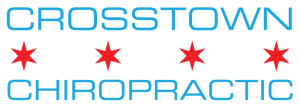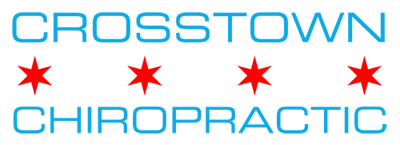
Rock Climbing Series, Part II: Climber’s Elbow
Climber’s Elbow, also known as Medial Epicondylitis, is tendinitis/tendinosis of the medial epicondyle of the humerus. Simply put, this is chronic pain of the inner elbow. If you want to know exactly where the medial epicondyle is, hold your arm out in front of you with your palm up. With your other fingertips, move up the pinky side of your forearm until you hit the bump at the elbow. This is it!
The medial elbow region is prone to overuse injuries for a couple of reasons. First the tendons attaching here are connected to the forearm flexor muscles, responsible for allowing you to grab (finger and wrist flexion). Second, the muscle that turns your palms down and away from you (pronation) attaches at the elbow. Do these movements sound familiar? Close your eyes and imagine yourself climbing. What position do your wrists and fingers go in? That’s right, flexion and pronation.

When you climb, the muscles attaching to the medial epicondyle (elbow) do a LOT of work to grasp the holds. The repeat trauma leads to inflammation and microscopic tearing at the muscles and tendons, causing YOU pain.
Overuse injuries can be managed and helped by practices such as cross-training, utilizing intervals, and using dynamic warmups. You can always try to start treatment at home. If pain persists or worsens, see a professional to help you manage your condition and discontinue home treatments.
Preventing Climber’s Elbow
One of the best ways to prevent injury due to athletic activity is by making sure to strengthen the weaker muscles (or those used less during activity) and stretch those used most. In this case, the flexors of the forearm should be stretched after climbing activity (and after extensive computer/ tablet/ smartphone use).
Stretching and Strengthening should be performed for Climber’s elbow:
Forearm Flexor Stretch:

1. Straighten one arm in front of you with palm facing down.
2. Using opposite hand, slowly pull your fingers and palm back towards chest until a stretch is felt throughout your forearm.
3. Keep elbow straight during exercise and hold for 30 seconds to 2 minutes
4. Repeat with opposite arm.
(Click Here For A Short Video Clip on Performing This Stretch)
Forearm Extensor Strengthening:

You can purchase finger extension tools, or use a purple or blue rubber band from the vegetable section at the grocery store. Wrap one or two rubber bands around your fingers and extend.
(Click Here For A Short Video Clip on Performing This Stretch)
Notice how fast your fingers fatigue! Most people have a significant imbalance of finger grip strength with very little extension strength. Gradually increase the number of repetitions you do. You can do this several times a day or every other day.
Additional Tips:
For the initial pain, rest and ice. Ice up to 20 minutes and take precaution not to irritate the skin. Climbers Elbow Braces can provide support to the elbow and minimize irritation while climbing.
– Sleep on your back instead of your side with support behind your neck, low back and knees. The neck and low back support can be accomplished by rolling up a hand towel to about the size of your wrist and placing in appropriate position. A pillow can suffice for the knee support. Side sleeping can be irritating to your shoulders, elbows, and wrists. If you must sleep on your side, make sure you have enough support from your pillow. Side sleepers require a firm mattress with a soft pillow top or foam topper to minimize pressure on the shoulders. Lastly, side sleepers need to hug a pillow in front of them instead of keeping your arm extended or overhead.
– Theraband FlexBar ($15)- Isometric exercise and stretches can be performed using a the Theraband FlexBar.
Trigger point therapy can be very helpful when treating Climber’s elbow. There are a couple at home therapy options:
· Lacrosse ball- Place a lacrosse ball on a table and use it to apply pressure to the muscles in your forearm. Hold the pressure on areas that feel tight and sore for 10-30 seconds.
· Foam Roller ($20)- Place the foam roller on the wall or table and use it to apply pressure to the muscles of the forearm.
There are a couple of devices available that can be purchased to help manage tendinosis and tendonitis using trigger point therapy at home as well:
· Rolflex ($60)
· Armaid ($100)
Anti-inflammatory supplements such as Pro-Enz or Turmeric may help. Check with your doctor if you are taking medications or have a diagnosed medical condition or are pregnant before taking any supplement.
If home care is not enough, see a professional. There are a variety of treatments options available to treat Climber’s elbow at our office such as:
· Chiropractic adjustments to the Elbow Wrist and Shoulder
· Graston therapy
· Kinesio taping
· Trigger point therapy/ Massage
· Interferential Therapy
See your healthcare provider if your pain is not easily managed at home.
Your Road To Recovery Starts Here
Helping You Achieve Optimum Results Is Just A Phone Call (Or Email) Away
Evening & Weekend Appointments Available
(773) 961-8951
Disclaimer: The information on our blog, social media posts, and website should not be used to substitute professional medical advice or emergency treatment. Do not use this information to diagnose a health problem or to develop a treatment plan for a condition without consulting a qualified health care provider. If you're in a life-threatening or emergency medical situation, seek medical assistance immediately.
